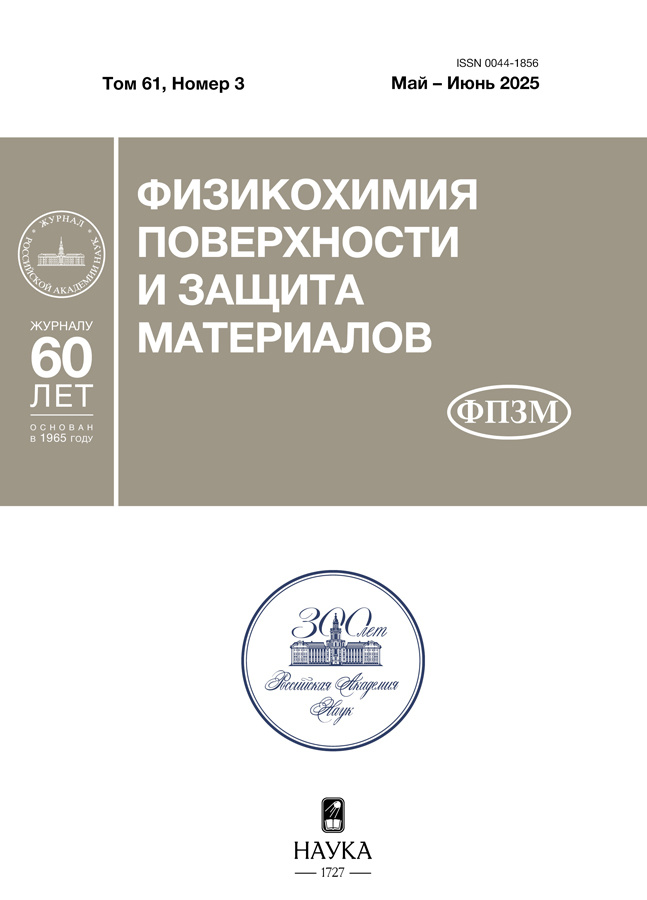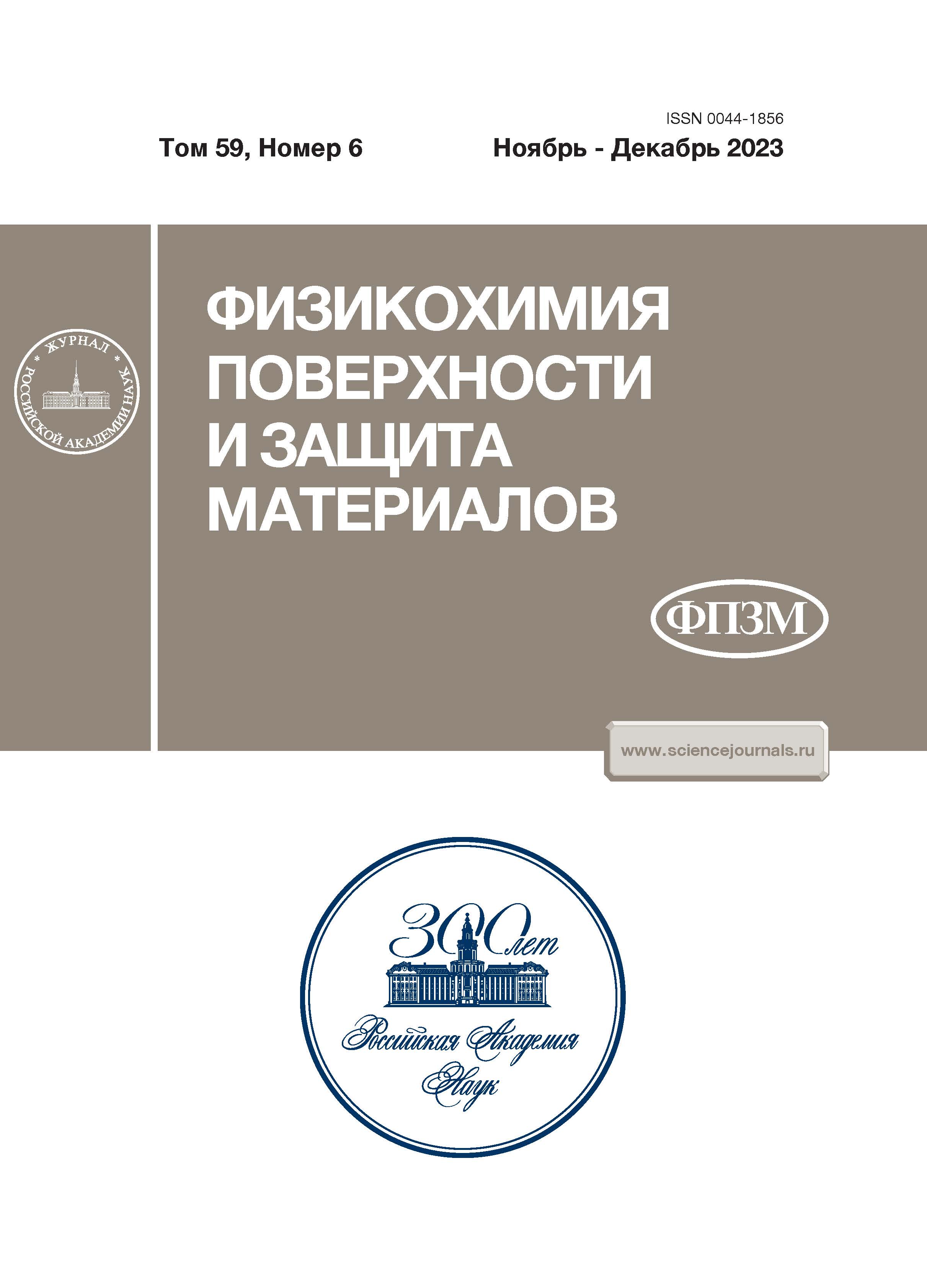Изотермы адсорбции энантиомеров на кристаллах гиппуровой кислоты, полученных в условиях созревания Виедмы с использованием градиента температур
- Авторы: Ахатова Г.И.1, Гуськов В.Ю.1
-
Учреждения:
- Уфимский университет науки и технологий
- Выпуск: Том 59, № 6 (2023)
- Страницы: 621-626
- Раздел: МЕТОДЫ ИЗУЧЕНИЯ ФИЗИКО-ХИМИЧЕСКИХ СИСТЕМ
- URL: https://rjraap.com/0044-1856/article/view/663950
- DOI: https://doi.org/10.31857/S0044185623700778
- EDN: https://elibrary.ru/HVIFIE
- ID: 663950
Цитировать
Полный текст
Аннотация
Работа посвящена изучению способности к хиральному распознаванию в процессах адсорбции кристаллов гиппуровой кислоты, полученных методом температурного градиента в условиях созревания Виедмы. Данный метод отличается тем, что первичное нарушение хирального равновесия между образующимися при кристаллизации зародышами вызвано не механическим воздействием мешалки, а кристаллизацией в области пониженных температур. В качестве тестовых энантиомеров применялись лимонены и α-пинены. Методом обращенной газовой хроматографии были получены изотермы адсорбции, анализ которых позволил установить способность поверхности к хиральному распознаванию. Показано, что энантиоселективность и адсорбционная активность синтезированных в работе кристаллов гиппуровой кислоты заметно выше, чем у кристаллов, полученных в условиях классического созревания Виедмы. Вероятно, причиной данного явления служит большая неоднородность поверхности.
Об авторах
Г. И. Ахатова
Уфимский университет науки и технологий
Email: guscov@mail.ru
Россия, 450076, Уфа, ул. З. Валиди, 32
В. Ю. Гуськов
Уфимский университет науки и технологий
Автор, ответственный за переписку.
Email: guscov@mail.ru
Россия, 450076, Уфа, ул. З. Валиди, 32
Список литературы
- Bonner W.A. // Origins Life Evol. Biospheres. 1995. V. 25. P. 175–190.
- Blackmond D.G. // Cold Spring Harb Perspect Biol. 2019. V. 11. P. a032540.
- Davankov V.A. // Symmetry. 2018. V. 10. P. 749–761.
- Davankov V.A. // Symmetry. 2021. V. 13. P. 1918–1934.
- Gus’kov Yu.V., Shayakhmetova R.K., Allayarova D.A. et al. // Phys. Chem. Chem. Phys. 2021. V. 23. P. 11968–11979.
- Ribo J.M., Hochberg D. // Symmetry. 2019. V. 11. P. 814–829.
- Bailey J., Chrysostomou A., Hough J. et al. // Science. 1998. V. 281. P. 672–674.
- Myrgorodska I., Javelle T., Meinert C., Meierhenrich U.J. // Israel J. Chemistry. 2016. V. 56. № 11–12. P. 1016–1026.
- Ribo J.M., El-Hachemi Z., Crusats J. // Rendiconti Lincei. Scienze Fisiche e Naturali. 2013. V. 24. P. 197–211.
- Sang Y., Liu M. // Symmetry. 2019. V. 11. P. 950–968.
- Shen Z., Wang T., Liu M. // Angewandte Chemie International Edition. 2014. V. 53. P. 13424–13428.
- Zhang Y., Chen P., Liu M. // Chemical European J. 2008. V. 14. P. 1793–1803.
- Davankov V. // Isr. J. Chem. 2016. V. 56. № 11–12. P. 1036–1041.
- Даванков В.А. // Сорбц. хромат. проц. . 2022. Т. 22. № 4. С. 552–555.
- Percec V., Leowanawat P. // Isr. J. Chem. 2011. V. 51. № 1107–1117. P. 1107.
- Frank F.C. // Biochimica et Biophysica Acta. 1953. V. 11. P. 459–463.
- Soai K., Shibata T., Morioka H., Choji K. // Nature. 1995. V. 378. P. 767–768.
- Soai K. // Proc. Jpn. Acad., Ser. B. 2019. V. 95. № 3. P. 89–110.
- Kondepudi D.K., Kaufman R.J., Singh N. // Science. 1990. V. 250. P. 975–976.
- Kondepudi D.K., Digits J., Bullock K. // Chirality. 1995. V. 7. P. 62–68.
- Viedma C. // Physical Review Letters. 2005. V. 94. P. 065504.
- Sogutoglu L.-C., Steendam R.R.E., Meekes H. et al. // Chemical Society Reviews. 2015. V. 44. P. 6723–6732.
- Viedma C., Cintas P. // Chem. Commun. 2011. V. 47. P. 12786–12788.
- Zinovyev I., Ermolaeva E., Sharafutdinova Y. et al. // Symmetry. 2023. V. 15. P. 498–512.
- Gus’kov V.Y., Gallyamova G.A., Sairanova N.I. et al. // Phys. Chem. Chem. Phys. 2022. V. 24. P. 26785–26794.
- Gus’kov V.Y., Shayakhmetova R.K., Allayarova D.A. et al. // Phys. Chem. Chem. Phys. 2021. V. 23. P. 11968–11979.
- Gus’kov V.Yu., Allayarova D.A., Garipova G.Z., Pavlova I.N. // New J. Chem. 2020. V. 44. P. 17769–17779.
- McLaughlin D.T., Nguyen T.P.T., Mengnjo L. et al. // Crystal Growth and Design. 2014. V. 14. P. 1067–1076.
- Kawasaki T., Suzuki K., Hatase K. et al. // Chemical Communications. 2006. DOI: . № 17. P. 1869–1871.https://doi.org/10.1039/b602442d
- Газо-адсорбционная хроматография / Киселев А.В., Яшин Я.И. М.: Химия, 1967. 256 с.
- Gus’kov V.Y., Gainullina Y.Y., Musina R.I. et al. // Separation Science and Technology. 2021. V. 56, pp. 527–540.
Дополнительные файлы















